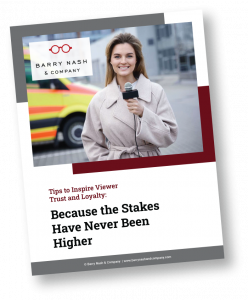In case you missed it, we wanted to share this essay from Roger Ebert’s memoir, reprinted by Salon on reports of his death.

We were especially moved by this statement:
We must try to contribute joy to the world. That is true no matter what our problems, our health, our circumstances. We must try. I didn’t always know this and am happy I lived long enough to find it out.
We talk about a great many important things when we discuss performance — the way you use your body and voice, the way you listen and relate to others, the importance of decisiveness in storytelling — but we do not often talk about the importance and benefit of working with joy. And in the final analysis, it may be the single most important thing you can do on-air — for yourself and your audience.
On the face of it, it may sound strange to claim that newscasters and weathercasters and sportscasters should work to contribute joy to the world, but the best of them always have and always do. This is because the qualities that matter most — and your ability to have any kind of enduring impact on the communities you serve — have nothing to do with whether you are sharing good news or bad. They have everything to do with the attitude you bring to the work, whatever you are sharing. The joy Ebert took in his work, however he felt about the particular movie he was reviewing, was what made his performance so authentic and compelling.
Science has shown that human emotion is infectious. Whether we are watching a movie reviewer or an athlete or a news anchor, we most love watching the ones who obviously love their work because we can literally feel the difference. Your joy — your relish in doing the job and having the conversation, whatever the nature of the news that day — somehow becomes our own.
In my early days at the old AR&D, veteran researcher Dallas Cronk used to talk about a quality that she knew was a definitive advantage but could not be named. She called it the X-Factor. One observable indicator of it was a certain gleam in the eye, and there was a fundamental belief that it could not be coached. You either had it or you didn’t.
Now, 30 years and thousands of coaching sessions later, I think it’s more accurate to say that you either have it or you’ve lost it. The good news: If the latter, you can find it again — and the gleam that goes with it — by following the example offered by Roger Ebert. Love the work, and wear your love for the work on your sleeve and in your eye.
Your newscasts, and the people who watch your newscasts, will all be the better for it.










